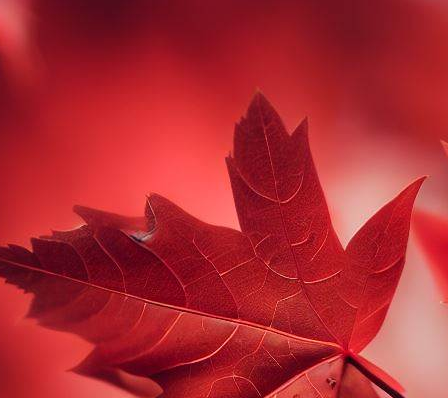Acer rubrum, more often known as red maple, is a deciduous tree that can grow up to medium size and is indigenous to the eastern region of North America, ranging from Quebec through Minnesota south to Florida and eastern Texas. It reaches 40-60′ tall with an oval to rounded crown. It matures more rapidly than Norway maples and sugar maples but at a slower rate than silver maples. Red maple commonly grows in moist bottomlands, river flood plains, and moist woodlands in northern states, but prefers the drier, rocky upland regions of Missouri. This cultivar needs cool temperatures and frost for good fall color, therefore it grows best in the north.
Northwood Red Maple Tree Pros and Cons
The average texture of the Northwood Red Maple blends with the surroundings, but for a strong composition, one or two trees or bushes with a finer or coarser texture can be used to balance it.
The following landscaping uses are ideal for Northwood Red Maple;
- Shade.
- Accent.
Northwood Red Maple is admired in the landscape mostly for its distinctive oval shape. During the early stages of spring, before the leaves emerge, it bears spectacular clusters of red blooms along its branches. It possesses green deciduous foliage that emerges red in the spring. In the autumn, the lobed leaves transform into an eye-catching red color. The landscape is enhanced by the brick-red branches and the furrowed silver bark.
It is recommended to prune this tree in the summer after all of the leaves have fully matured because if it is pruned in the late winter or early spring, it can “bleed” sap. This tree is pretty low care. It does not possess any notable unfavorable features. It is important to be aware that the root system of this tree is quite shallow and flattened, and that it has the potential to buckle surrounding sidewalks if it is placed too close to these surfaces.
Northwood Red Maple Tree Care
The mature height and width of a Northwood Red Maple are approximately 50 feet and 40 feet, respectively. It is not recommended to grow this tree beneath overhead power lines due to its large canopy, which can reach heights of up to 7 feet above the ground. This tree’s lower branches are specifically removed as it matures to produce a canopy high enough for uninterrupted human traffic underneath.
This tree possesses a medium growth rate and can live up to 80 years in optimal conditions. This tree is best successfully cultivated in direct sunlight. It grows well in medium to wet environments and can even withstand standing water. It prefers acidic soils and is susceptible to foliage chlorosis in alkaline soils. It can tolerate mild urban pollution.
Northwood Red Maple Tree Diseases
This cultivar has no major pest or disease problems, although it is important to keep an eye out for leafhoppers, aphids, caterpillars, borers, and scales.
The vascular system is frequently targeted by verticillium wilt, which frequently results in deadly outcomes. Wilts are frequently acquired from the soil, plant waste, or contaminated seeds. This fungus germinates and grows throughout the wet, cold season, but it only becomes noticeable when the temperature warms up and dries off. The fungus causes plants to wilt by destroying their water-conducting mechanisms. Overfertilization worsens this issue. It is carried and harbored by common weeds and can spend many years overwintering in the soil. There are further possibilities of root rots, canker, and fungal leaf spots.
Northwood Red Maple Tree Problems
The Northwood red maple is resistant to the majority of diseases and possesses few insect issues. They are occasionally vulnerable to aphids, however, these pests rarely cause major damage. Aphids mostly feed on plant fluids. Aphids appear as green, brown, or black, and they also possess wings. They cause stunting, distorted leaves, and buds in a variety of plant species.
Aphids can reproduce approximately 250 live nymphs per female every month without mating, and their population can grow swiftly. They frequently congregate at the branch tips, where they feed on succulent tissue. Yellow attracts aphids, and they frequently hitchhike on yellow clothing.
The populations of aphids are typically controlled by natural predators. If these trees develop a severe aphid infestation, use insecticidal soap, neem oil, or insecticides like permethrin, diazinon, chlorpyrifos, malathion, or acephate.



